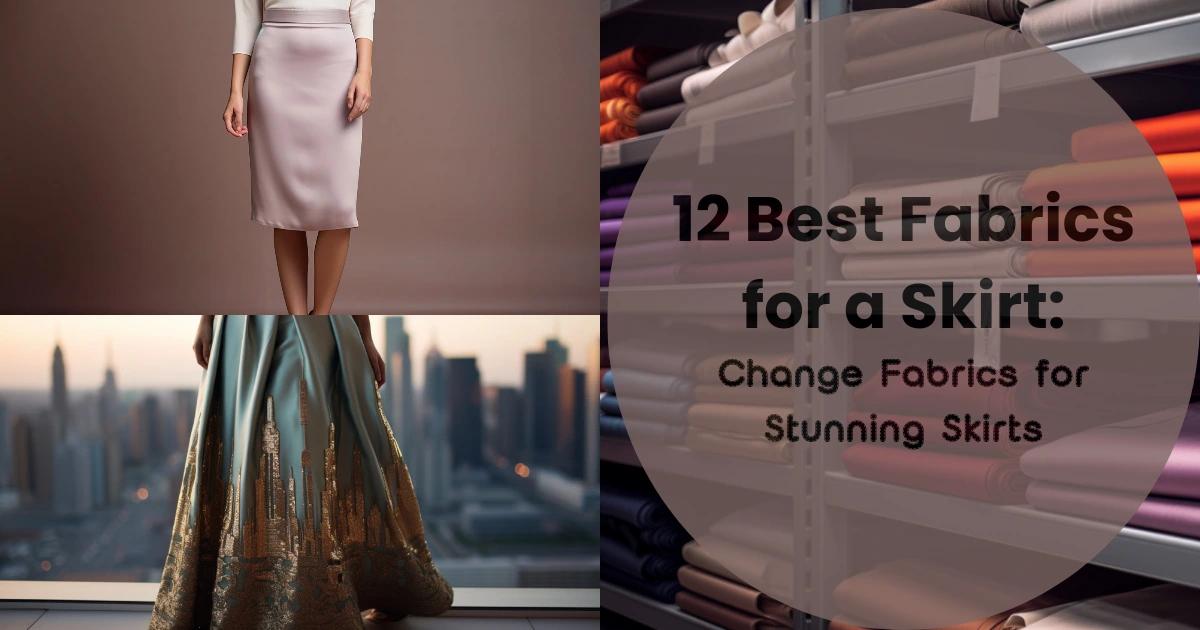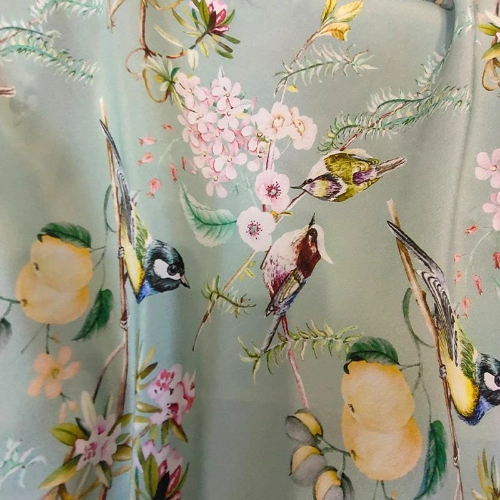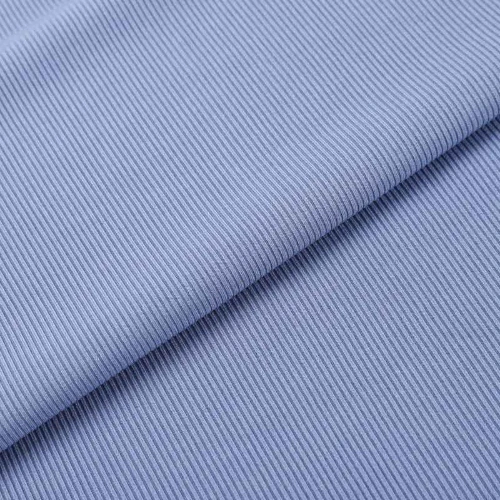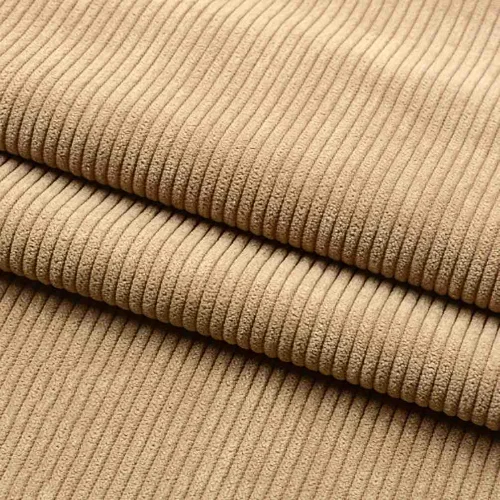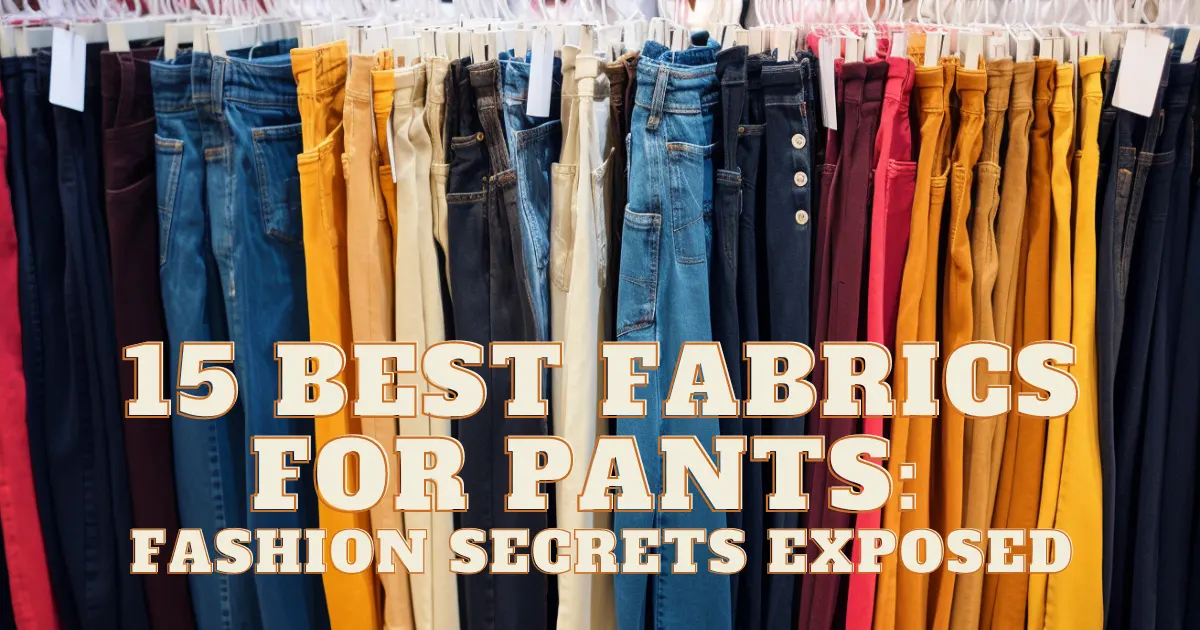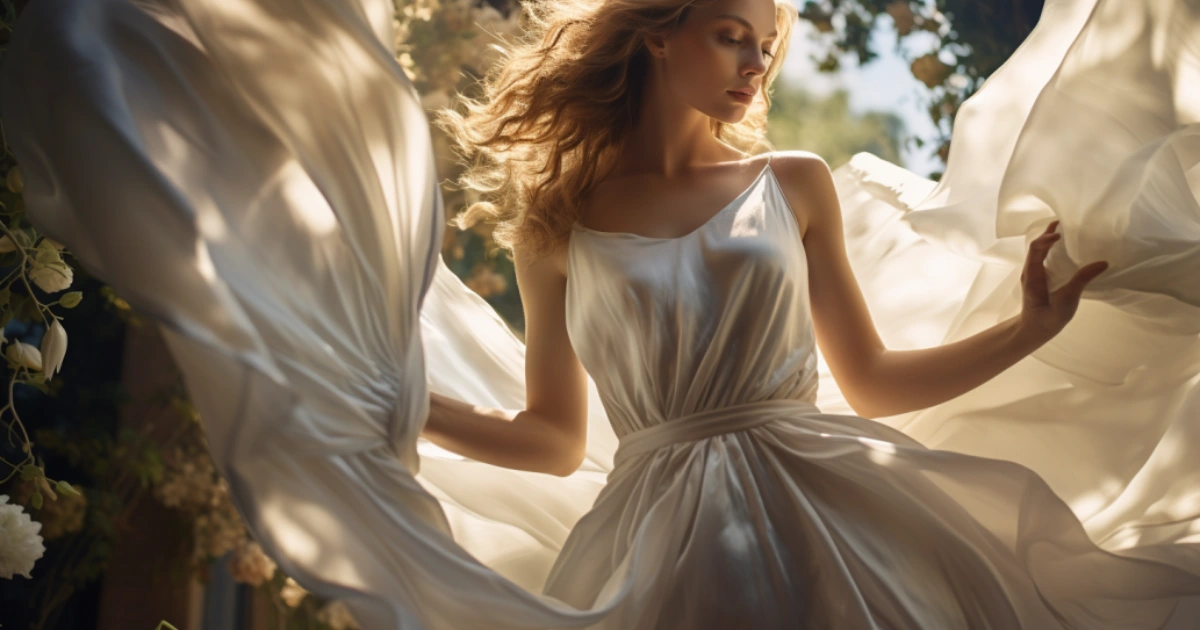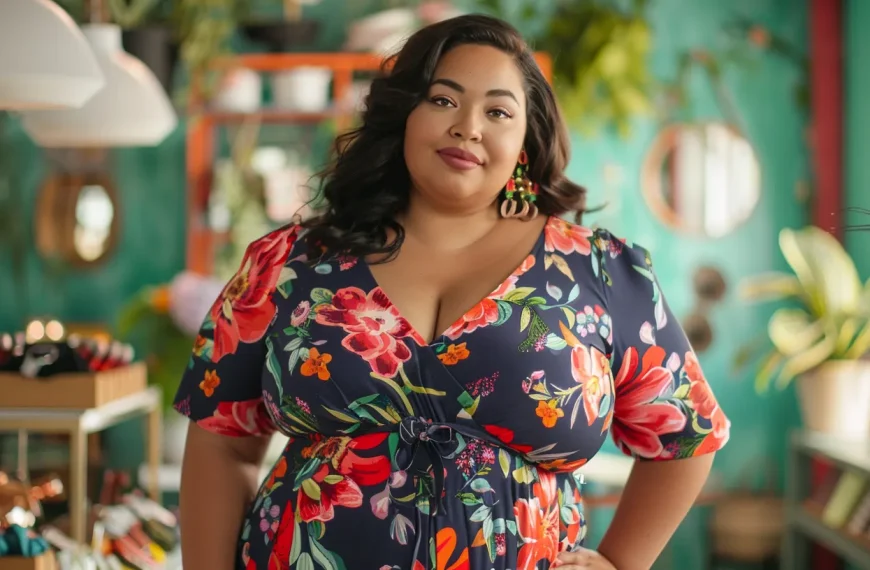When it comes to choosing the perfect fabrics for a skirt, there are numerous options available. These options can greatly impact the overall look and feel of the garment. You might find it hard to choose a suitable fabric for a skirt. But today is your lucky day. I’ll explore the 12 best fabrics for a skirt, each with its own unique qualities and characteristics.
Ready to give your skirts an upgrade? Let’s dig into the world of fabrics!
(Related: 15 BEST FABRICS FOR PANTS: FASHION SECRETS EXPOSED)
Consider Essential Factors When Choosing Fabrics for a Skirt
It’s crucial to think about the shape and design your skirt will have when picking out fabric. The material you choose should flatter the pattern of your envisioned garment.
The texture and comfort level are decisive factors in selecting skirt materials as well. Natural fabrics such as cotton or silk can provide softness against the skin. While synthetic textiles tend to be more durable and wrinkle-resistant.
Additionally, consider if the color of your chosen fabric maintains its vibrancy after numerous washes and how much it might shrink over time.
Weighing up these factors will ensure that your fabric fits correctly. Also, it will provide maximum comfort.
12 Best Fabrics for a Skirt
There are various popular fabrics that you can consider when it comes to choosing the right fabric for your skirt. Here is a list of the 12 best fabrics for a skirt:
1. Cotton
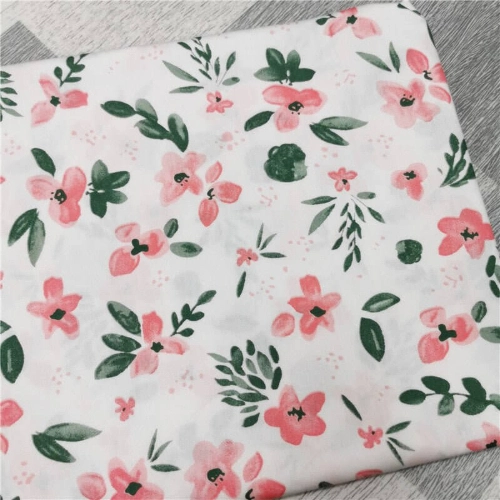
Cotton is one of the most popular fabrics for a skirt due to its versatility, breathability, and comfortable feel. As a natural fabric, it has the ability to withstand different weather conditions. So cotton is known to be soft on the skin.
Among the varieties of cotton fabrics, cotton lawn presents itself as an excellent choice for lightweight summer skirts. Poly-cotton provides a blend of durability and comfort, making it ideal for everyday wear. Cotton knits are stretchy materials suitable for body-hugging styles like pencil skirts or tube skirts.
With proper care, cotton fabric can preserve its sheen and color endurance throughout the year.
2. Linen

Linen is also one of the natural fabrics for a skirt. It is known for its durability and breathability, which make it perfect for warmer weather. Linen’s loose weave and breathable fibers make it an excellent choice for summer skirts.
It is often used to create bubble skirts because of its ability to provide volume and movement. However, there is one thing to keep in mind. Linen tends to wrinkle easily, so you may need to iron or steam your skirt regularly.
Despite this, linen is considered a high-quality fabric that will give your skirt an elegant and timeless look.
3. Wool
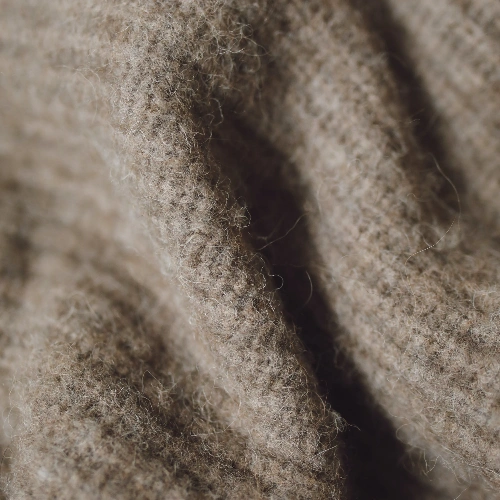
Wool is a fantastic fabric choice for skirts, especially in colder weather. It provides exceptional warmth and insulation, keeping you cozy on chilly days. Wool also has excellent draping characteristics, giving your skirt a structured and polished look.
Not only is it stylish, but wool is also incredibly durable. It means your skirt will maintain its shape and withstand regular wear. With different weights and textures available, you have plenty of options when choosing the perfect wool fabric for your skirt.
Plus, wool’s natural breathability ensures that you stay comfortable by allowing air circulation throughout the day.
4. Polyester
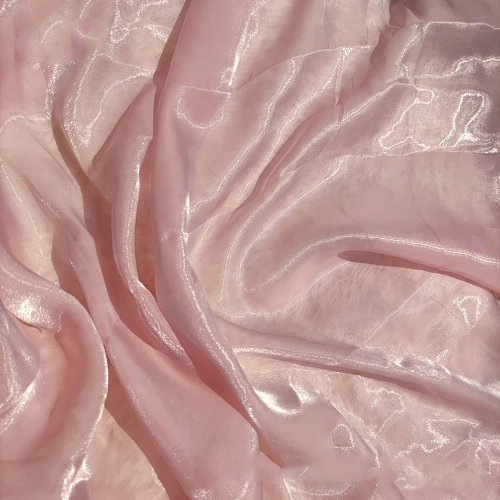
Polyester is popular for skirts due to its many advantages. One of the main benefits of polyester fabric is its easy maintenance and durability. It can withstand frequent wear and washing without losing its shape or color.
Additionally, polyester has good stretchability. This makes it ideal for skirts with pleats that need flexibility. Polyester also drapes well, allowing you to create flattering silhouettes for your skirt designs.
Lastly, polyester is known for its endurance of colors and resistance to shrinkage. These features ensure that your skirt will look vibrant and maintain its size even after multiple washes.
5. Denim

Denim is versatile and can be suitable for both casual and semi-formal occasions. It comes in various skirt styles, including mini skirts, pencil skirts, and A-line skirts.
They can be dressed up or down, depending on the occasion and accessories you choose to pair them with. The great thing about denim skirts is that they can be worn year-round. During colder months, you can layer them with tights or leggings for added warmth without sacrificing style.
So if you’re looking to sew a skirt that offers durability, style, and endless outfit possibilities, consider using denim as your fabric of choice.
6. Silk
Silk serves as a luxurious choice for women seeking to sew their own skirts. Known for its smooth and stunning texture, silk easily enhances any skirt design. It’s perfect for elegant occasions or everyday wear.
The endurance of vibrant colors on silk fabric is largely unmatched by other materials. This allows your skirt to shine in vivid hues long after its creation. However, the longevity and quality of this material hinge on careful maintenance practices. It needs hand washing and gentle drying methods.
Whether you’re crafting a masterpiece for a formal gathering or laboring over a casual chic number, choosing silk adds an undeniable touch of sophistication to your sewing project.
7. Satin
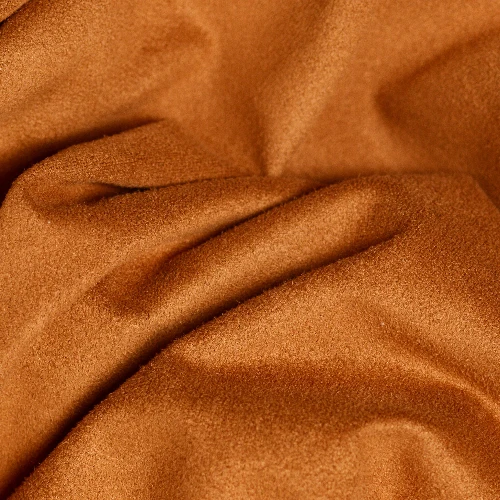
Satin is also a luxurious fabric that adds elegance to any skirt. This type of fabric exhibits an enticing sheen and smoothness. It’s perfect for the creation of enchanting pencil skirts. Crafted from various materials, satin demonstrates flexibility in design and durability, with colors that endure over time.
So if your skirt requires good stretchability or you simply want to embrace an exquisite touch in its style, satin should be on top of your list!
8. Rayon
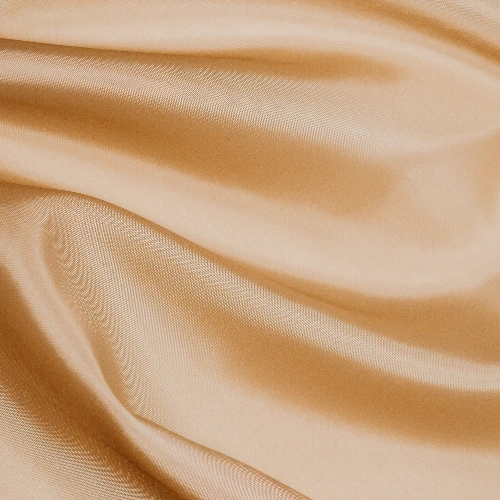
Rayon is a lightweight and flowing fabric that is perfect for creating A-line skirts. It has a smooth texture that adds to the comfort of your clothing. However, it’s important to note that rayon can shrink if not properly maintained.
Despite being a synthetic textile, rayon is widely used due to its softness and drape. For those who are planning on making an A-line skirt, rayon is definitely worth considering. Because it provides the ideal combination of style and practicality.
9. Taffeta
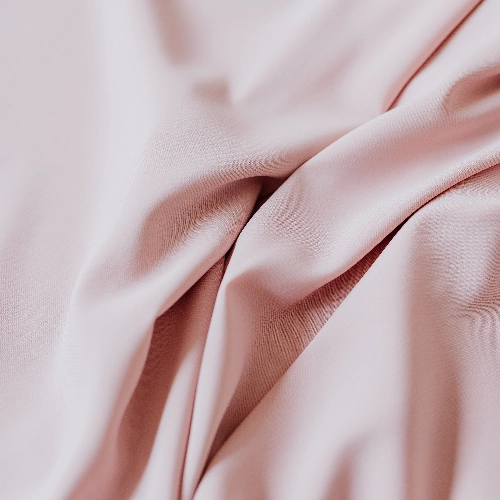
Whether you’re dressing up for a formal event or going for a more casual look, taffeta can work well in both settings. One of the great things about taffeta is that it has good color endurance. So your skirt will maintain its vibrant hue over time. Plus, taffeta fabric tends to have minimal shrinkage. It ensures that your skirt will fit just right, even after washing.
Keep in mind that taffeta is often associated with special occasions. So if you want to make a statement with your skirt, this fabric could be the perfect choice!
10. Jersey
Jersey fabric is famous for its comfort, stretchability, and ease of movement. All these make it perfect for both formal and casual skirts.
Whether you’re looking to create an A-line skirt, a pencil skirt, or a cute mini skirt, jersey can easily adapt to any style. Another advantage of jersey is that it’s lightweight and breathable. This makes it ideal for summer skirts where you want to stay cool.
Plus, since it molds to your body shape nicely, jersey skirts can be made for a perfect fit. So go ahead and give jersey fabric a try—you won’t be disappointed!
11. Corduroy
Corduroy is popular thanks to its unique texture, which adds visual interest. Whether you’re going for a casual or dressier look, corduroy can work well with various skirt patterns and styles.
One of the biggest advantages of corduroy is its durability. It can withstand regular wear and tear, making it a great option for long-lasting skirts. In addition, the texture of corduroy provides a cozy and warm feel. This makes it perfect for cold-weather skirts.
So if you’re choosing the best fabrics for a skirt that’s both stylish and practical, consider giving corduroy a try!
12. Canvas
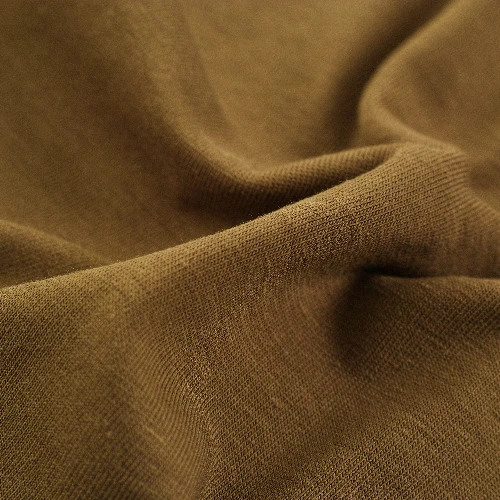
As a durable and sturdy material, canvas is perfect for creating circle skirts. Because it can provide a flattering flow and silhouette.
With canvas, you can be confident that your skirt will withstand regular wear and tear. One yard of canvas fabric is usually enough to make a skirt, making it an economical option as well.
So if you’re looking for the best fabrics for a skirt, canvas is definitely worth considering for your next skirt sewing project.
Best Fabrics for a Skirt: Different Types of Skirts
Next, let’s discover tips for choosing the best fabrics for different types of skirts.
A-Line Skirts
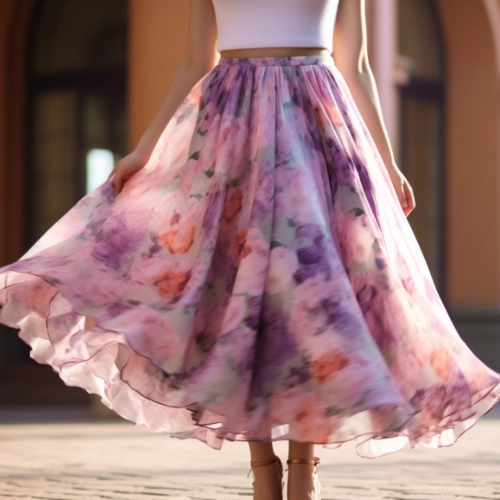
A-line skirts are known for their flattering shape, gradually flaring out from the waist to create an “A” silhouette. So you need a fabric that drapes and moves well.
Cotton is considered one of the best options. Linen is also commonly used due to its affordability and easy handling.
Pencil Skirts
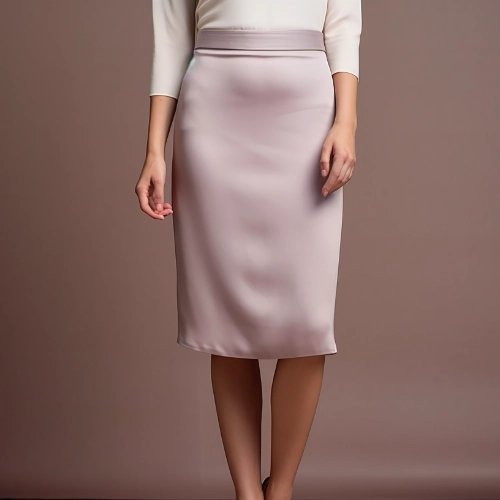
When making a pencil skirt, it’s important to choose the right fabric. Fabrics that have some stretch, like cotton and spandex blends or polyester and elastane blends, are commonly used for pencil skirts.
These fabrics not only provide comfort but also allow for ease of movement. So if you’re looking to sew your own pencil skirt, consider using one of these stretchy fabrics for a comfortable fit that flatters your figure.
Mini Skirts
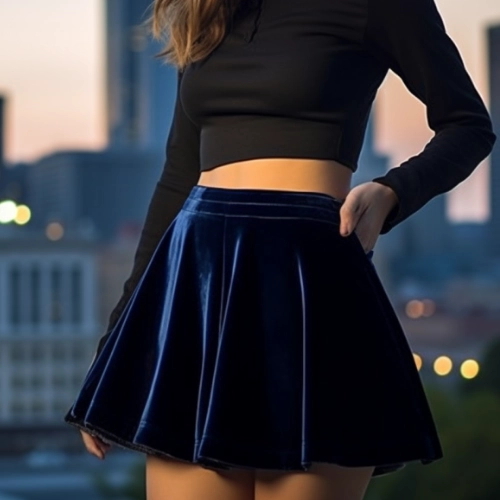
Mini skirts typically have a short length that falls above the knee. When choosing fabric for a mini skirt, it’s important to consider the drape and weight of the material.
Lightweight fabrics like chiffon or satin can create a flowy and feminine look. While denim or corduroy can add some structure and edge to your outfit. Also, stretchy materials like jersey or spandex can provide comfort and flexibility as you move around.
Pleated Skirts
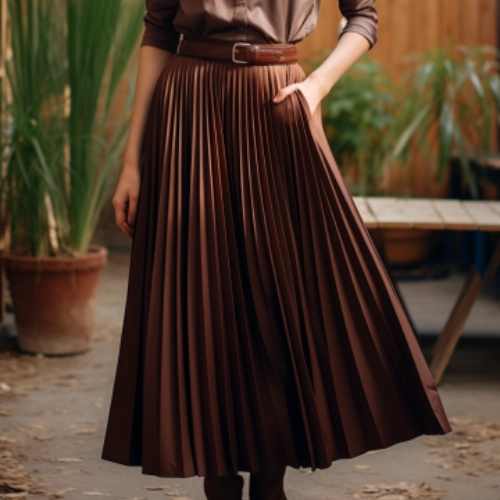
When it comes to choosing the right fabric for your pleated skirt, there are several options to consider.
One of the best fabrics for pleated skirts is cotton. It’s lightweight, breathable, and offers excellent drape, making it perfect for creating soft and flowy pleats. Another suitable option is polyester. Its easy maintenance and good stretchability make it ideal for pleated skirts. Because the advantages will help keep their shape even after repeated wear.
Maxi Skirts
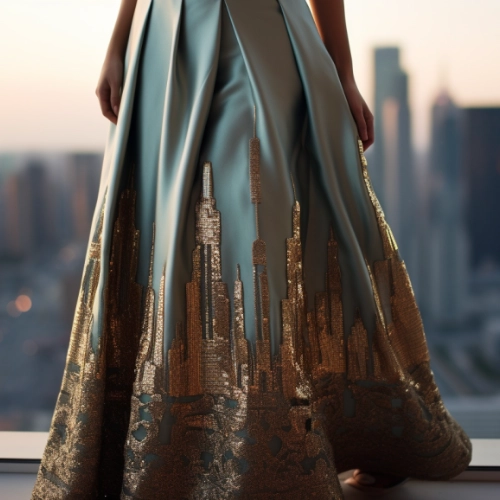
Maxi skirts are long and flowing skirts that fall to the ankles or floor. The choice of fabric for a maxi skirt depends on factors such as comfort, style, and occasion.
Cotton is considered one of the best fabrics for maxi skirts due to its style, comfort, and ease of sewing. Silk is a smooth and beautiful fabric often used for elegant maxi skirts for special events.
Circle Skirts
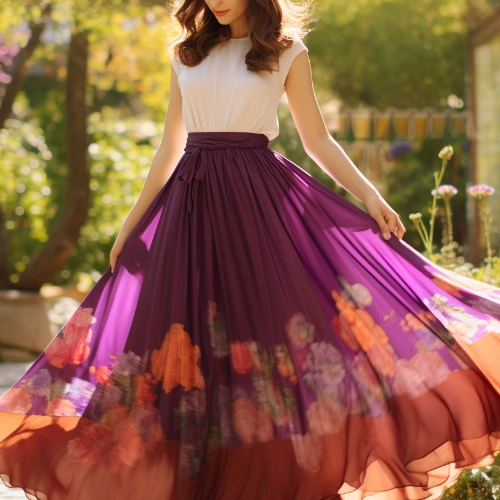
The best fabrics for circle skirts are those with drape and movement, such as chiffon, satin, or lightweight knits. These fabrics allow the skirt to flow gracefully and create a flattering silhouette.
When choosing fabric for your circle skirt, consider the weight and stretch of the material to ensure comfort and ease of movement.
Best Fabrics for a Skirt: Seasonal Skirts
When it comes to seasonal skirts, it’s best to use lightweight fabrics for summer skirts to keep cool. While heavier materials are better for winter skirts to stay warm.
Summer Skirts
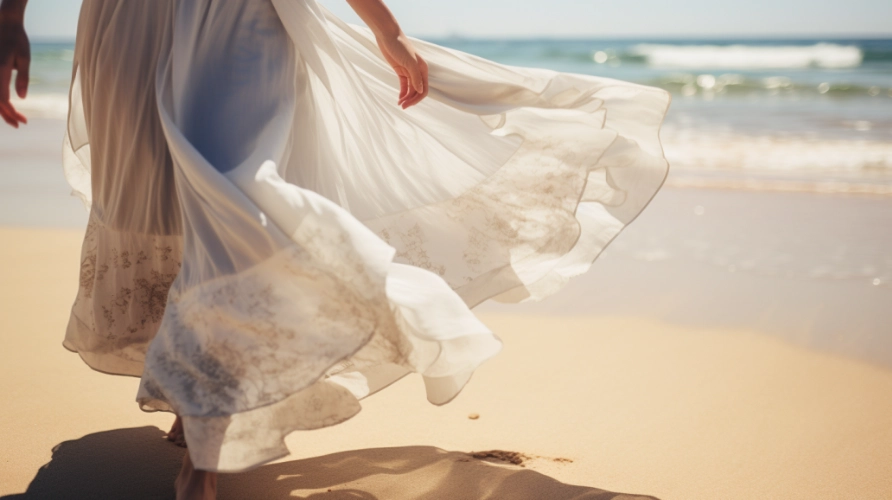
Summer skirts are a must-have in any woman’s wardrobe. When choosing fabric for your summer skirt, it is important to consider breathability and lightweight materials. They can keep you cool and comfortable during the hot months.
Natural fabrics like linen and cotton are ideal choices as they allow air circulation, absorb moisture, and dry quickly. These fabrics will not only keep you feeling fresh but also provide a soft and breezy feel against your skin.
Winter Skirts

Wool, tweed, and corduroy are popular fabric choices for winter skirts. Because they provide thermal insulation to keep you warm during the colder months. These fabrics have excellent heat-trapping properties. They can help you stay cozy without sacrificing style. Additionally, their heavier weight adds a nice structure to your skirt.
So when sewing a skirt for the winter season, consider using these fabrics to ensure both comfort and fashion-forwardness.
Best Fabrics for a Skirt: Stretchy Skirts
Stretchy materials are a great choice for a DIY skirt. They provide comfort and flexibility, allowing for easy movement. Here are some examples of stretchy fabrics that are suitable for skirts:
- Polyester: A stretchy material that works well for skirts with pleats.
- Rayon: Another stretchy fabric that is ideal for A-line skirts.
- Knit: This versatile fabric is perfect for sewing mini skirts.
How Many Yards of Fabric Are Needed for a Skirt?
To determine how many yards of fabric you’ll need for a skirt, you should consider the length and style of the skirt, as well as your body measurements. Factors such as pleating, gathers, or additional design details like ruffles may also affect the amount of fabric needed.
Remember that it’s always wise to buy slightly more fabric than necessary to account for any mistakes or alterations. And don’t forget to pre-wash and iron your chosen fabric before cutting and stitching!
On average, a knee-length A-line skirt will require about 1.5 to 2 yards of fabric.
For a maxi skirt or a full circle skirt that falls below the knees, you may need around 3 to 4 yards of fabric.
If you’re making a fitted pencil skirt, it’s best to measure your waist and hips first. Then consult a pattern or sewing guide for specific yardage recommendations.
Conclusion
Choose the best fabrics for a skirt based on factors like comfort, drape, and durability. Consider natural options like cotton or silk for a breathable feel. Or you can select synthetic fabrics like polyester or nylon for added stretch and ease of care.
Each fabric has its own unique properties that can enhance the style and functionality of your skirt. So go ahead and start sewing with confidence since you’ve found the best fabrics for your next skirt!
FAQs
Q: Will the color of my skirt fade over time?
A: The endurance of fabric colors can differ depending on the type of material used. Synthetic fibers tend to resist fading better than natural ones. But you should always check the level of shrinkage and fade resistance before choosing fabrics for skirts.
Q: Can I use different types of fabric to make a miniskirt?
A: Yes! Lightweight woven fabrics such as linen, silk broadcloth, poplin, or crepe de chine can be great choices due to their drape and weight, which would flatter those with thick thighs.
Q: Is it possible to embroider or print on all types of skirt fabrics?
A: No, not all fabrics are suitable. If your skirt is embroidered or printed, some may shrink under heat-press machines. So it’s important to know what kind you’re working with beforehand.
Q: Which durable yet comfortable fabric could be recommended for children’s clothing?
A: Acrylic is popular in children’s clothing. Because it offers wrinkle resistance, quick drying capabilities, and does not shrink easily. These make it perfect for outfits that endure fun-filled kid adventures!
Q: How do I care for my rayon challis maxi dress?
A: Given rayon challis’s delicate nature, aim for gentle wash cycles without bleach. Avoid tumble-drying and instead opt for the air-drying method. This way, you extend its life beautifully.
6 Best Fabrics for Aprons: Discover for Style, Comfort, and Durability
12 Best Fabrics for a Skirt: Change Fabrics for Stunning Skirts
An Ultimate Hoodie Fabric Guide: Choose the Best Fabric for Hoodies

